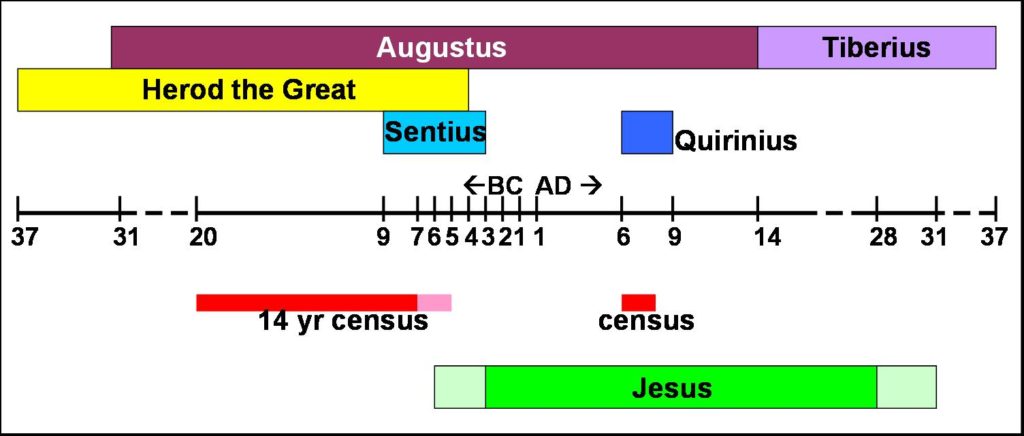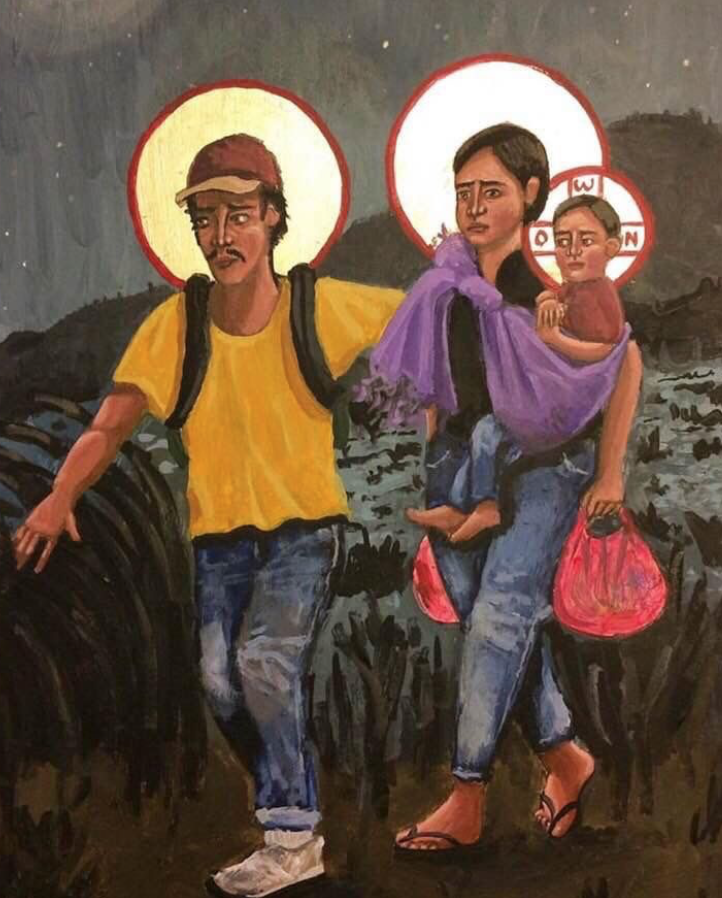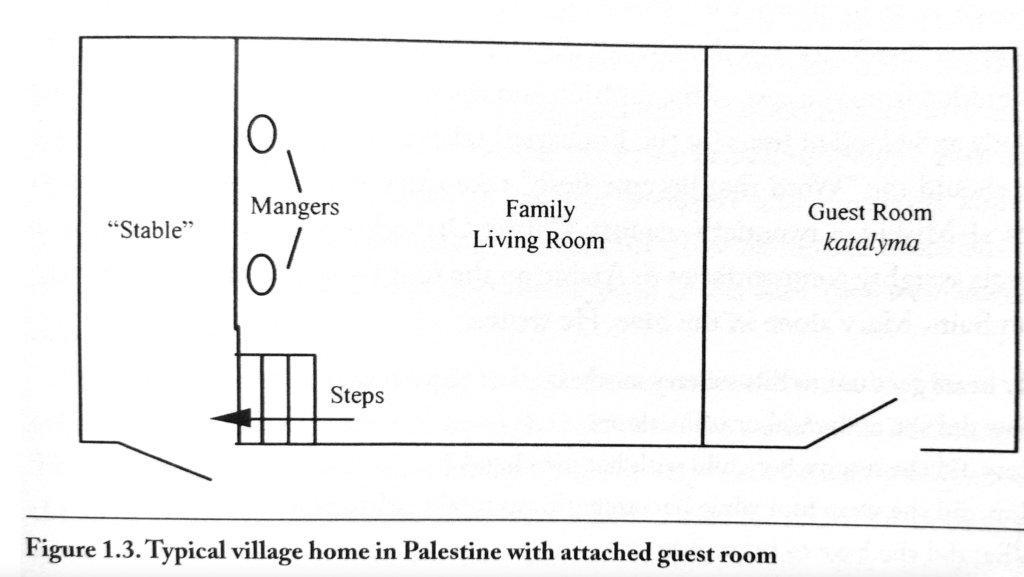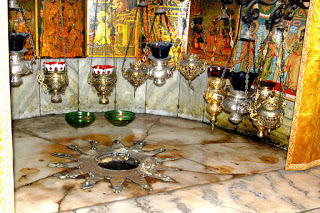
Each year we are confronted with a Nativity scene from a number of sources. Is it ok to have a blended Nativity story, or should the story be read from the perspective of that audience? Where are we standing? Even Banksy has a vision of this?


There are no Christmas Nativity stories in the Gospels according to Mark and John – why is that do you think? Was Mark focussing upon the life of Jesus, and John was not an eye witness of the birth, (but nor were any of the disciples) so also majored upon the impact of Jesus.
Luke’s Story
In the Lukan story we have Gabriel arriving to Nazareth to visit the Virgin Mary.
The Greek for the word Virgin is parthenos which has a variety of meanings including young maiden, not necessarily Virgin. How critical is that to our faith?
The issue originates from the Hebrew in Isaiah 7:14 which uses the word Almah, which is translated to parthenos.
As we will discuss next week, Matthew’s interpretation fits with the Hebrew Scripture from Isaiah 7:14, but Luke’s may work as it fits with the “Son of God”, as discussed by Ehrman (sadly behind a paywall). Other faiths also have virgin births. Where are we standing on this issue?
Then Mary speaks with the Angel using the immortalised words from the Beatles track “Let it be“. 😉
Roman Influence
The Emperor Augustus has found that one of the Tetrarchs Herod the Great has not been doing very well, and has ordered a Census, highlighting that Quirinius was the Governor of Syria at that time. But Judea was not a Roman Province but merely a client kingdom. Hence Judea would not have needed to be part of the Census. As can be denoted from the graphic below, Herod dies in either 4 BC or around 1BC, depending upon the sources. Quirinius isn’t the Governor until 6 AD.

There’s a problem with this for the date of Jesus’ birth: not 6 BC or 6 AD (or CE). How critical is that to our faith?
Did Luke get his nativity history wrong? Thanks to Dr Ian Paul
Where are we standing here?
The Long Journey
Joseph now takes his bride to be Mary with him on a journey from Nazareth to Bethlehem. That’s a distance of 90 miles – quite a journey for a young couple. They would have had to take their own provisions through the Forests along the River Jordan – notorious for outlaws.

How far would a pregnant woman go each day? Some suggest 20 miles over such rugged terrain. But then again there might have been quite a ‘caravan’ of people on that same journey.
Then again, many couples take a hazardous journey these days, don’t they? #CentralAmerica #EnglishChannel
Some would suggest that there is no evidence within Roman records of such a requirement to journey to your ancestral home; moreover, it may have been only for the male head of the family. Does this matter to you? Where are we standing?
The Birth
Mary gives birth to her first born child and lays him in a manger….or was it a manger? and in a stable?
The word used in Luke 2:7 for the ‘inn’ is kataluma. The first translations, that with a manger, suggested animals and offered visions of the ox and the ass…in a stable. However, the word Kataluma (Gr.) refers to:- “the spare or upper room in a private house or in a village […] where travelers received hospitality and where no payment was expected” . A private lodging which is distinct from that in a public inn, i.e. caravanserai, or khan.” So it is not an Inn.
The depictions below show the distinct separation of the stable and the guest room.

Here even it is shown as the ‘Upper Room’. This may be odd as Luke uses the term for ‘upper room’ in Luke 22:12 (ἀνάγαιον) which is not as expected.

Furthermore, was it ‘the manger’ or ‘a manger’? They use that same word for Manger or does it matter? Well it would for a few people out on the hills, who might be soon looking for the baby Jesus.
On the Hills
The Shepherds are working at night – do we hear a message of being in the darkness perhaps?
The Angel greets them – and they were terrified – would we???
Soon there were lots of Angels singing, bringing light perhaps to the scene. The Shepherds go off the hills – leaving their sheep? (They may have been Temple sheep)- into the town and find the new babe. How do they find the baby Jesus? They may go to ‘The Manger‘, a rock cave, well known to all, a key location in Bethlehem. Is this a major difference? Where are we standing on this matter?

What shall we give him?
The Shepherds bring nothing to give to the new babe nor family. Not even their heart?
The couple with babe in arms then go to the Temple in Jerusalem before travelling back to Nazareth.
No star, no angelic messages to Joseph, no visitors from afar – why the difference? Where are we standing now?
Questions
- If this was the only Nativity message, how would that affect our perception of Christmas?
- If there were many more alternative Nativity messages available, what then?
- Who are the shepherds of today? Could they be key workers – a phrase applicable for 2020. Could it be the care worker, the uber driver, the postal staff, the shop worker?
- What gifts do we need to bring, in 2020, to meet with Jesus? We wondered whether, today, we bring essential gifts such as a good Hotpot, some diapers or nappies, and baby-grows. Perhaps, in conclusion, as the shepherds didn’t bring any gifts – possibly because the lambs were not their property but the Temples – we might question the desire for us to bring presents at Christmas? #JustSaying
One thought on “Which Nativity should we choose? (Part 1)”
Comments are closed.